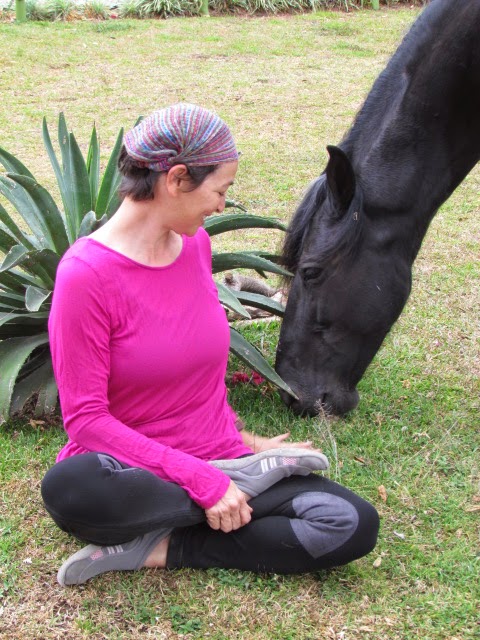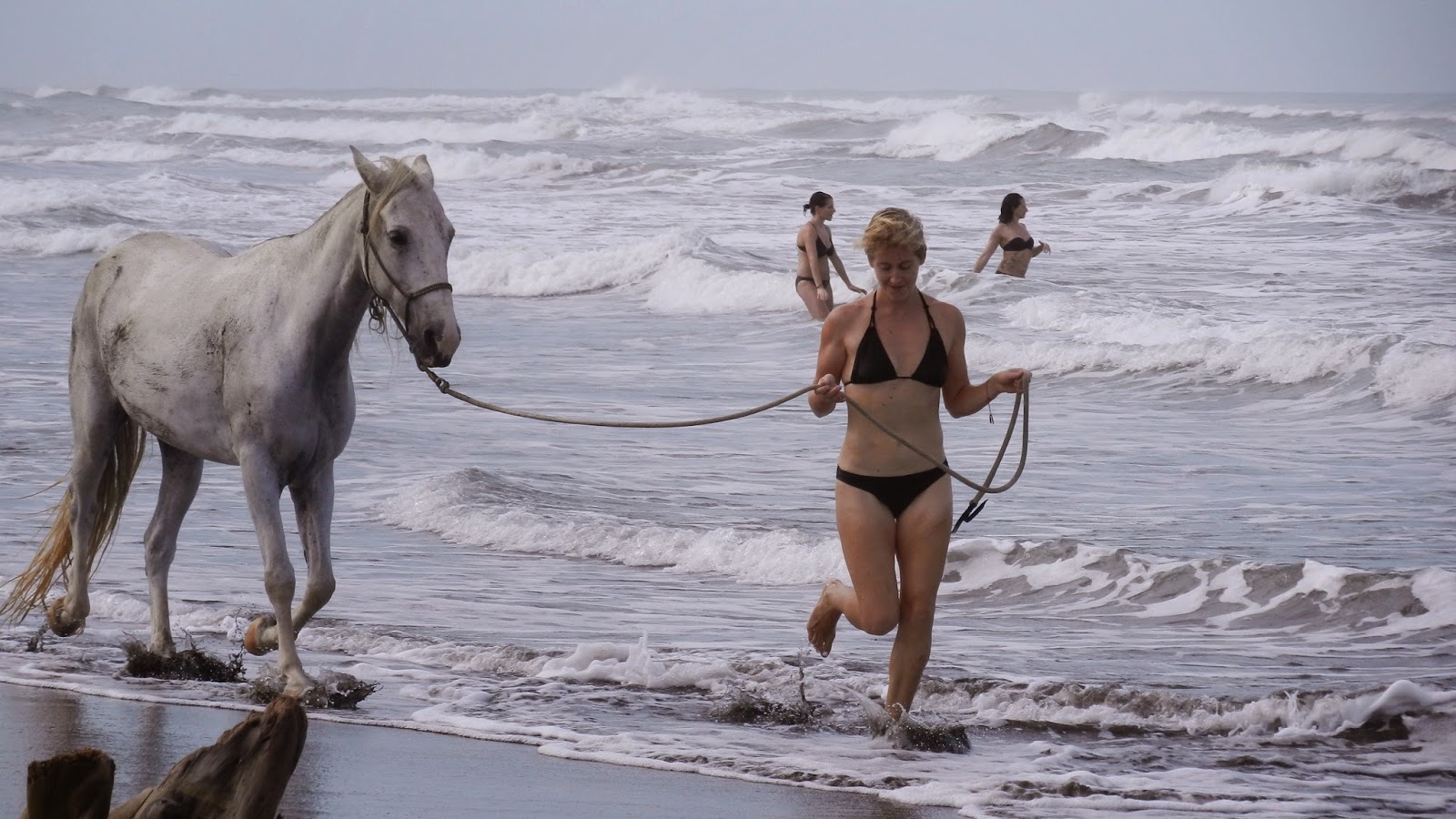There is a lot of good and bad literature out on the web these days about natural horsemanship. I find it confusing so I imagine a lot of other people do too. I find it useful to read, read and read some more about the practice of natural horsemanship and then put the theories into practice. Having a young horse like Half-Pint makes it fun turning book learning into real riding experiences.
Just as in Yoga there are many paths so in natural horsemanship are there many ways to practice your training and your interactions with your horse. There are, however, some core principals both espouse. As a yoga practitioner I find the first limb of Yoga by Patanjali works well to describe these common guidelines. (see the 8 limbs of Patanjali and ashtanga yoga)
What are these common guidelines? If we put them into yoga parlance they would be as follows:
#1. Yamas : moral guidelines for our behaviour towards oneself and towards others
a. ahimsa: non-violence
b. satya: truth
c. asteya: non-stealing
d. brahmacharya: self discipline, abstinence
e. aparigraha: non-coveting
How can we apply these yamas to our horse training?
AHIMSA... First, of course, we never want to hurt our horse, physically or emotionally. This means we educate ourselves on the proper care and feeding of our horse. We do not knowingly use negative reinforcement to "teach" a lesson to our horse.
SATYA...In order to have a honest and truthful communication with our horse we must educate ourselves about the true nature and psychology of our horse.
ASTEYA...In this case non-stealing means we take care not to take away the liberty and dignity of our horse in our training and care for him. We honour his God-given right to a life of integrity while under our care.
BRAHMACHARYA...We take care not to let our ego supersede the physical and emotional health of the horses in our care.
APARIGRAHA...Similar to the practice brahmarcharya, we take care not to let jealousy or other such emotions guide our training practices.
The very definition of Natural Horsemanship encompasses the Yamas.
Further the practice of the Niyamas is also an integral part of natural horsemanship.
#2 Niyamas: These are guidelines to individual behaviour.
a. saucha: purity in body, thought, and spirit
b. santosa: contentment
c. tapas: austerity, self-discipline
d. swadyay: self-study
e. isvara pranidhana: dedication to a higher power
How do we apply the Niyamas to our natural horsemanship practices?
SAUCHA...Horses are extremely intuitive animals and they sometimes know our emotions and thoughts better than we do. When we are with our horses we should take care to have loving and positive thoughts and actions. We are constantly communicating with our horse, even if we are not aware of that communication.
SANTOSA...When we are in the moment, truly focussed on the matter at hand we experience contentment and that calm demeanour is transferred to our horse.
TAPAS...Like the niyamas earlier our emotions and actions are always being communicated to our horse. The practice of self-discipline helps to keep us focussed, calm, and attentive to our horses.
SWADYAY...The more we interact with our horses the more we learn about ourselves. We learn about our capacity for patience, perseverance, compassion and empathy.
ISVARA PRANIDHANA: The bond we experience with our horses leads us to appreciate and honour a greater universal love and unity than just rationalization can comprehend.
Further in the Yoga sutras of Patanjali yoga practitioners are admonished to do their practice with the "right knowledge." With regards to natural horsemanship that means we are called to study and learn, to read and ask questions, to always be a student of our horse's physical and psychological make up.
Here is an example, a simple one but a powerful illustration of right knowledge coupled with the observances of the yamas and niyamas in natural horsemanship.
Half-Pint has been with us almost a full year now. He is almost 5 years old. He is ridden without a bit, and sometimes without a halter or reins. My priority in all our training sessions is to deepen our connection and our ability to communicate with one another. With that goal in mind as we train together I do figures that will help him strengthen his muscles, increase the range of motion in his joints, and enhance his muscular and skeletal balance.
He is naturally more stiff in his right turns, meaning he keeps his neck rather straight when turning to the right rather than gently arching his neck and his whole body into a banana shape. To help him soften his left neck muscles I have to first understand the mechanics of how muscles contract and stretch. His ability to turn a balanced right turn is directly dependent on how easily he can relax the left side of his neck. Or you could say his ability to contract the right side of his neck. In Yoga we know that when we contact our front quads our hamstrings automatically lengthen: muscle mechanics of stretching.
Armed with this knowledge , and coupled with the universal truth that horses move away from pressure , I ask Half-Pint to make a right turn with my outside left rein and leg. My right leg is quiet as is my right rein. Ok, this is not rocket science and all riders know how to make a right turn, the difference in natural horsemanship is that we do not use the introduction of pain or discomfort to teach the right behaviour. Instead we use the observance of the yamas and niyamas to help us.
I practice the yamas by closely observing Half-Pint's reaction to the lesson. Have we first established a connection where he is ready and eager to begin our lesson? How is he responding? with confusion, rejection, anxiety, contentment and eagerness? I ride without any horse tack that will introduce discomfort to Half-Pint. The lesson is learned by patient repetition and fun figures to keep him curious and eager to see what we are going to do next.
I observe the niyamas in the same way, by keeping my focus and awareness on the physical and emotional well being of Half-Pint. I only keep the lesson going for as long as I think Half-Pint is enjoying and learning. I respect his feelings and physical condition for that training period.
Lastly, I have faith in him and me; in the bond we have created between us.











.JPG)



























